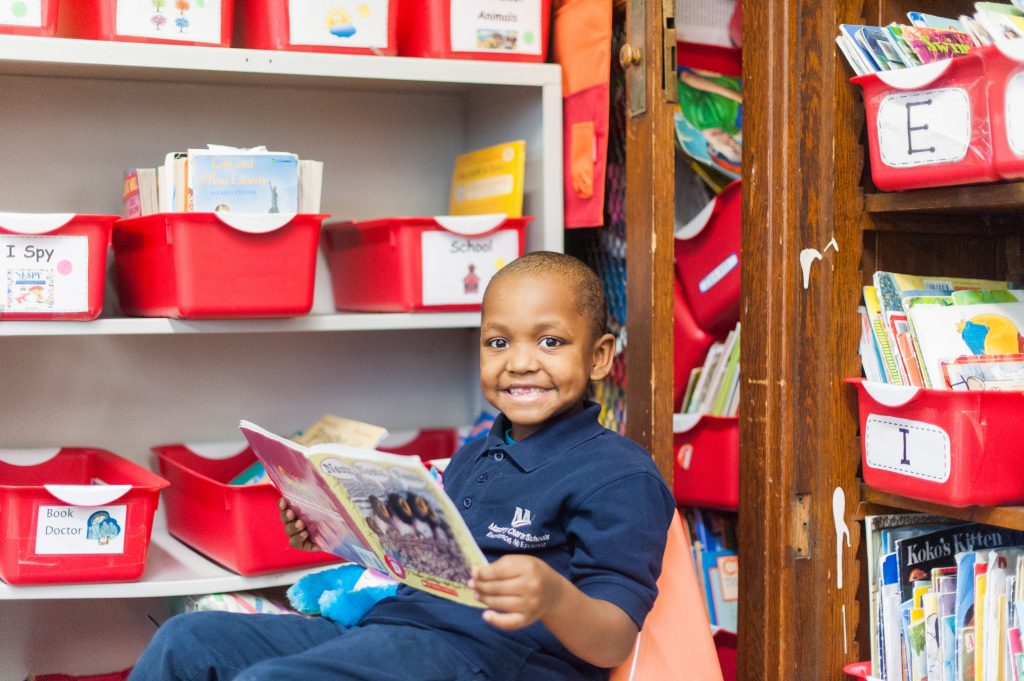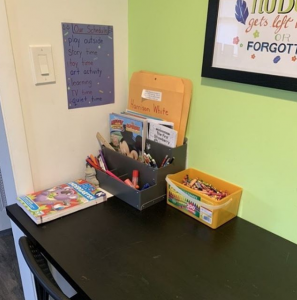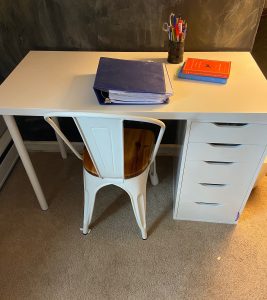Si necesita traducción al español, haga clic en el botón “Translate” en la esquina superior derecha.
This page outlines our Home Academic Practice or “HAP” plan — our guidance and expectations to support your child’s learning at home during the school closure.
We’d like you to set an expectation with your child that three hours a day are dedicated to reading, writing and engaging in academics. Our plan to support you in this effort has two phases.
Continue to monitor ParentSquare for more information. Not getting ParentSquare messages? Click to register.
Our HAP program phases:
- Phase 1: Focuses on reading at home and accessing online content if possible. The program is divided into K-2 and 3-12. Please refer to the information below for guidance.
- Phase 2: Includes hardcopy materials that we will mail to you. At this time we’re working with our printing vendors to figure out when that mailing can occur – we’ll keep you posted. If needed, please update your mailing address here.
Online Resources
Explore Online Resources and Talk to Your Teacher
Log in to Mastery’s online learning platform with your child(ren), begin browsing through each website and check out the activities and information available. Click on the Online Guides below. Feel free to self-select activities you/your child engages in. Ideally, your child is engaging in activities that are familiar, yet challenging. We will be providing more specific recommendations for units of study in the coming days. For now, consider this self-directed learning. Encourage your child to explore, engage and work hard!
Before the end of the day on Friday, March 24, you should have received a call from your child’s teacher to see how you are doing and to provide support. If you have not received a call, please fill out this form.
Continue to Explore Book Resources
The goal is for you to explore the book resources with your child(ren), select a book to start with and get them reading. See below for Book Resources. The information below describes our reading expectations. We recognize that there may be many challenges your household is managing right now – do what you can to support your child’s learning and we’ll work with you.
Book Resources
Reading
For K-2 children (and other children that might benefit), please read aloud and/or support your child with reading. Ideally, such activities occur for short periods of time (ten to thirty minutes) and occur several times throughout the day. Consider having older children read to younger ones. Have children read to you and others. Create a comfortable reading nook in your home. Provide time for children to turn pages, look at pictures and enjoy. Providing time for K-2 children to engage with literature – reading, listening, looking – is all beneficial and will support your child’s reading development.
We’d like you to find books, whether in your home or from the resources below, and begin reading to them. Shoot for an hour, broken up into small chunks.
If you don’t have books at home, don’t worry. There are also free books that you can access on your phone or home computer – see the list of resources below. If none of these options work for you, that’s still ok! We’re working hard right now to prepare, print, and mail out hard copy materials. We’ll be sharing an update about that in the coming days.
- The Libby app lets anyone with a library card borrow books for 14 days. A one-pager is attached on how to use Libby and sign up for a library card online.
- Open Library has a large (and free) database of titles that you can either read online or download via PDF.
- Scholastic is releasing daily books with corresponding videos and activities. All can be accessed here.
- Storyline Online has a library of famous people like Al Gore, Rashida Jones, etc. reading children’s books (K-5) aloud that can be viewed for free via Youtube and Vimeo.
Reading
For children and young adults in grades 3 through 12, the most valuable thing they can do is to read a book. Ideally, the books should be at their reading level, meaning that they can read them without support from a parent or teacher but there are occasionally new vocabulary or challenges.
Start with the books that they have from school and any others to which you may have access. Social media sites and web surfing are not equivalent to reading time.
Consider creating a dedicated schedule for children or young adults to read every day. Ideally they should be reading for one to two hours daily. Some children may enjoy multiple short periods of independent reading while others may enjoy reading for an hour or longer without pause. The goal is to have children and young adults read and read quite a bit.
We’d like you to identify books in your home, or books that your child brought home from school, or books from the resources below, and have your child begin reading. Start with an hour.
If you don’t have books at home, don’t worry. You child should have books from school. There are also free books that you can access on your phone or home computer – see the list of resources below. If none of these options works for you, don’t worry either. We will work with you. In fact, we’re trying hard right now to prepare, print, and mail out hard copy materials. We’ll be sharing an update about that in the coming days.
- The Libby app lets anyone with a library card borrow books for 14 days. A one-pager is attached on how to use Libby and sign up for a library card online.
- Open Library has a large (and free) database of titles that you can either read online or download via PDF.
- Scholastic is releasing daily books with corresponding videos and activities. All can be accessed here.
- Storyline Online has a library of famous people like Al Gore, Rashida Jones, etc. reading children’s books (K-5) aloud that can be viewed for free via Youtube and Vimeo.
A Mastery Teacher Will Support You
Every Mastery student has been assigned a HAP teacher. They are available to provide general academic guidance, help with accessing resources and any other academic related questions you or your child may have. The HAP teacher will reach out to you by the end of this week and provide you with contact information. When you reach back out to the HAP teacher, please leave a voicemail with your name and number. Your teacher will follow up with you within 24 hours (except on weekends).

Internet Access
If you don’t currently have home internet access, please consider Comcast’s free internet access for new customers ($9.95/month after that). Check out www.internetessentials.com.
Structure and Routine
Set up a daily schedule:
At school, your child has a daily routine and schedule. Establishing the same type of schedule at home will help give your child structure. Start with two to three hours of academics each day. For younger children, the hours can be divided into 15 to 30 minutes blocks and spread throughout the day. Older children may benefit from 30 minutes to hour-long blocks.
Consider these ideas:
Khan Academy schedules here for all ages and other sample schedules.


Set up a learning station:


Set up rules:
- Play it like a normal day; get dressed, make bed, get to work
- Be respectful, responsible, and ready to learn
- Wash your hands. A lot.
For other ideas click here.
Music, Crafts & Physical Activity
Scheduling music and art time will support ensuring a healthy mind and body. Some children are interested in visual arts such as drawing, painting and sculpting. Others may be excited to do crafts such as paper-folding, knitting and scrapbooking. Some may be more interested in dance. And still others may be more drawn to playing instruments or singing. It’s all beneficial. Start with one hour of music and art time and encourage your child to use this time to develop a new skill or explore a new art or music venture. Daily time for children to be physically active will support fitness as well as a healthy mood. There are countless exercise resources available on the internet including exercise routines and yoga.
- Art and writing: Learn to Draw with Mo Willems Celebrated children’s book author and illustrator Mo Willems has written some of your child’s favorite stories–ask them about “Don’t Let the Pigeon Drive the Bus!” and the Elephant and Piggy series. Every weekday at 1 pm, he is live-streaming an art lesson. Videos will be posted and remain available after the livestream.
- Paper made flowers
- Melted crayon art (hair dryer, crayons, paper)
- Toilet paper rolls arts & crafts
- Homemade play dough recipe
- Digital storyboards: Kids can create digital storyboards
- Incredibox (like an online garage band where kids can create their own accapella beats tracks)
- Cosmic Kids Yoga
- 7 minute workout
- Open Phys Ed
- Khan Academy Pixar
We are eager to support you. If you have any questions or concerns, please don’t hesitate to reach out to your school administration.